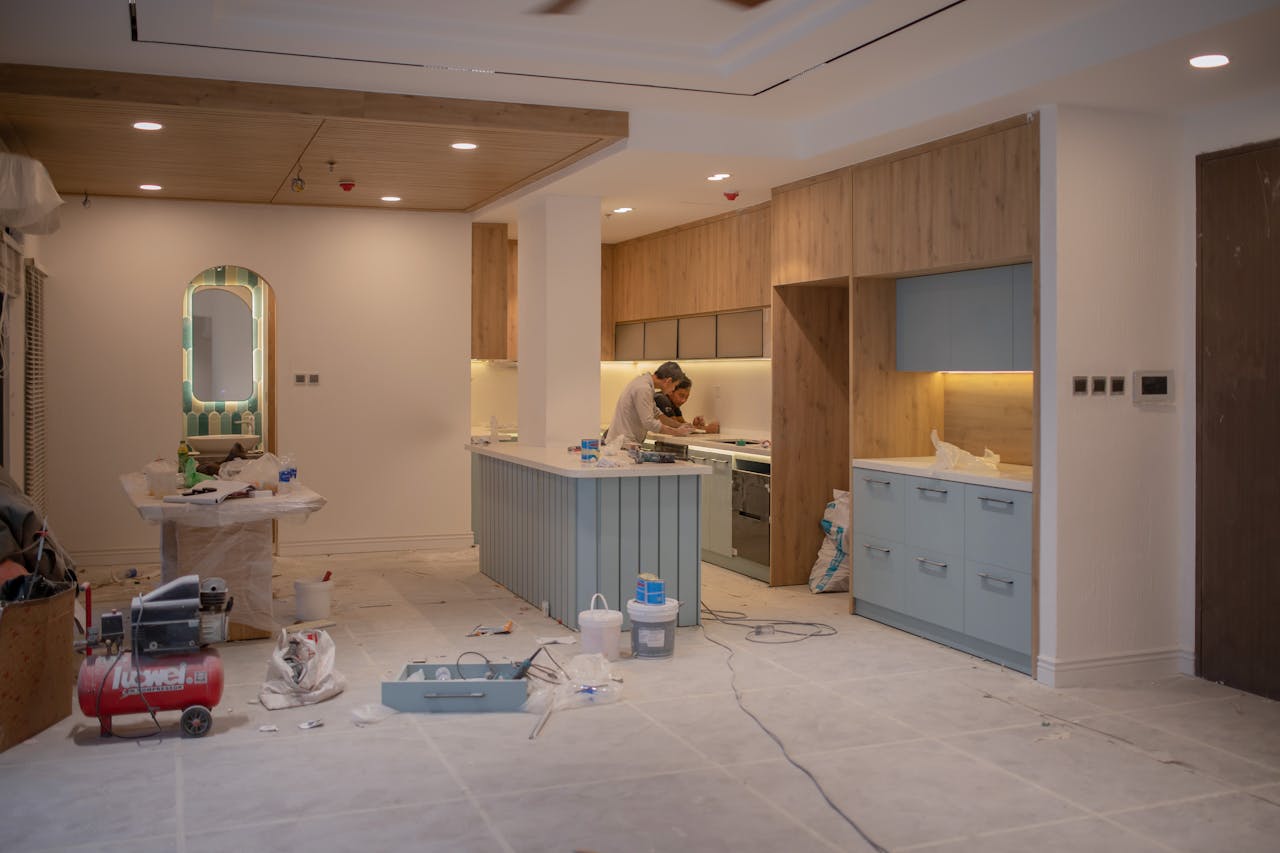As we all spend increasing amounts of time within the confines of our homes, it becomes increasingly important to create a harmonious living environment. The kitchen, often described as the heart of the home, is a space where we prepare our meals, gather with family, and start our mornings. Therefore, the materials used in its construction can have a significant impact on our health and well-being.
When we consider the materials used in the construction of our kitchens, we must consider not only their aesthetic appeal but also their impact on the environment and our health. Natural materials offer several advantages in this respect – they are generally more sustainable, pose less harm to the environment, and provide considerable health benefits for the people using them. This article explores the health benefits of using natural materials such as wood, stone, and air-purifying plants in kitchen construction.
In the same genre : What are the essential factors to consider when choosing kitchen window treatments?
Direct Health Benefits of Using Natural Materials
When we use natural materials in our kitchen’s construction, we are not just creating a design that is pleasing to the eye; we are also integrating elements that can have direct health benefits.
Wood
Wood is a popular choice for kitchen construction because it is durable, versatile, and brings a warm aesthetic to the space. But beyond its physical properties, wood also offers several health benefits. Studies have shown that exposure to wood interiors can lower stress levels, heart rate, and blood pressure.
This might interest you : How to deal with dampness and mold in older UK kitchen spaces?
The use of wood can also improve indoor air quality. Unlike synthetic materials, which can offload volatile organic compounds (VOCs) into the air, wood does not emit harmful compounds. This can make the air in your kitchen healthier to breathe, reducing the risk of respiratory problems and allergies.
Stone
Stone, another natural material commonly used in kitchen construction, is well known for its durability and timeless appeal. But it also provides a health advantage. Stone surfaces, particularly granite, are naturally resistant to bacteria. This makes them an excellent choice for kitchen countertops, where food preparation takes place.
Air-Purifying Plants
Integrating air-purifying plants into your kitchen design can significantly improve indoor air quality. Many common houseplants, such as English ivy and snake plants, are known for their ability to remove toxins from the air. This can contribute to a healthier breathing environment in the kitchen, aiding in the reduction of allergies and respiratory issues.
Sustainability and Health
Making sustainable choices in kitchen construction is not just good for the environment; it is also beneficial for our health. By choosing natural materials, we are often selecting products that are free from harmful chemicals and toxins.
Many traditional building materials contain chemicals that can offload into the air over time, contributing to poor indoor air quality. Poor air quality is linked to a wide range of health issues, from respiratory problems to headaches, fatigue, and even long-term conditions like heart disease.
By contrast, natural materials such as wood and stone do not contain these harmful chemicals. They also require less energy to produce and transport, reducing their carbon footprint.
Furthermore, using sustainable materials can contribute to a healthier living environment in other ways. For example, wood is a renewable resource that can be locally sourced, reducing transportation emissions and supporting local economies.
Connecting to Nature
The trend of using natural materials in the kitchen is part of a larger design movement known as biophilic design. This design philosophy is based on the idea that people have an innate desire to connect with nature, and that doing so can have significant health benefits.
When we incorporate natural elements into our kitchen design, we create an environment that can reduce stress, improve mood, and even enhance cognitive function. This connection to nature, known as biophilia, can also foster a sense of well-being and contentment.
Natural light is a critical component of biophilic design. Incorporating large windows, skylights, or glass doors into your kitchen design can bring in natural light, enhancing mood and productivity, and helping to regulate sleep cycles.
Similarly, using natural textures such as wood and stone can evoke the feeling of nature indoors, contributing to a sense of calm and relaxation.
The Future of Natural Materials in Kitchen Construction
As we continue to understand the health benefits of using natural materials in kitchen construction, their use is likely to become more prevalent. Designers and homeowners are increasingly recognizing the value of creating spaces that are not only beautiful and functional but also promote health and wellness.
While the benefits of using natural materials are clear, it is important to remember that not all natural materials are created equal. For example, certain types of wood are more sustainable than others, and some stone products may be sourced in ways that harm the environment. As consumers, it is our responsibility to do our homework and choose materials that are truly sustainable and health-promoting.
As we move forward, it is likely that we will see more innovative uses of natural materials in kitchen construction. From reclaimed wood to recycled glass countertops, the possibilities are endless. By making thoughtful choices about the materials we use in our homes, we can create spaces that are healthy, sustainable, and truly in harmony with nature.
Health Benefits of Biophilic Kitchen Design
The concept of biophilic design goes beyond just using natural materials in kitchen construction. It’s a design approach that aims to incorporate nature into the built environment in a more holistic way, fostering a deeper connection with nature and thereby promoting health and well-being.
In a biophilic kitchen design, the use of natural materials like wood and stone is complemented by the integration of natural light, plants, and other elements that can bring the outdoors in. This is accomplished through strategic placement of windows or skylights, the inclusion of indoor plants, or even the installation of a living wall filled with greenery.
Large windows or skylights not only let in an abundance of natural light, which can improve mood and productivity, but also provide views of the outdoors, which studies have shown can reduce stress and increase mental well-being.
The presence of plants further enhances indoor air quality by absorbing harmful pollutants and releasing oxygen. Consider using low-maintenance air-purifying plants like spider plants or peace lilies. If you have the space and resources, a living wall can be a stunning feature that not only purifies the air but also adds a vibrant, living element to your kitchen.
Texture also plays a crucial role in biophilic design. The tactile nature of natural building materials like wood and natural stone can bring a sense of calm and promote relaxation. These materials can also introduce a visual connection to nature, enhancing the overall design aesthetics.
Conclusion: Creating an Eco-Friendly Kitchen for Better Health
In conclusion, using natural materials in kitchen construction can significantly improve the health and well-being of those who use the space. From air-purifying plants that improve indoor air quality to the stress-reducing properties of wood and natural stone, these materials offer a plethora of health benefits.
Moreover, adopting a biophilic approach to kitchen design can further enhance these benefits by creating a stronger connection to nature. This can be achieved through the strategic use of natural light, the addition of indoor plants, and the use of natural textures.
As we move forward, it’s crucial to continue exploring and integrating eco-friendly and health-promoting practices in our kitchen design and construction. This includes using sustainable materials that are sourced responsibly, and continuously innovating with reclaimed or recycled materials.
By being mindful of the materials we use and the way we design our kitchens, we can create a space that not only serves its functional purpose but also promotes health, well-being, and harmony with the environment. After all, the kitchen is the heart of the home, and it deserves to be built with heart.
Remember: When designing your kitchen, consider using natural materials and integrating elements of biophilic design. This will not only create a visually appealing space but will also promote better health and contribute to a more eco-friendly kitchen environment.






